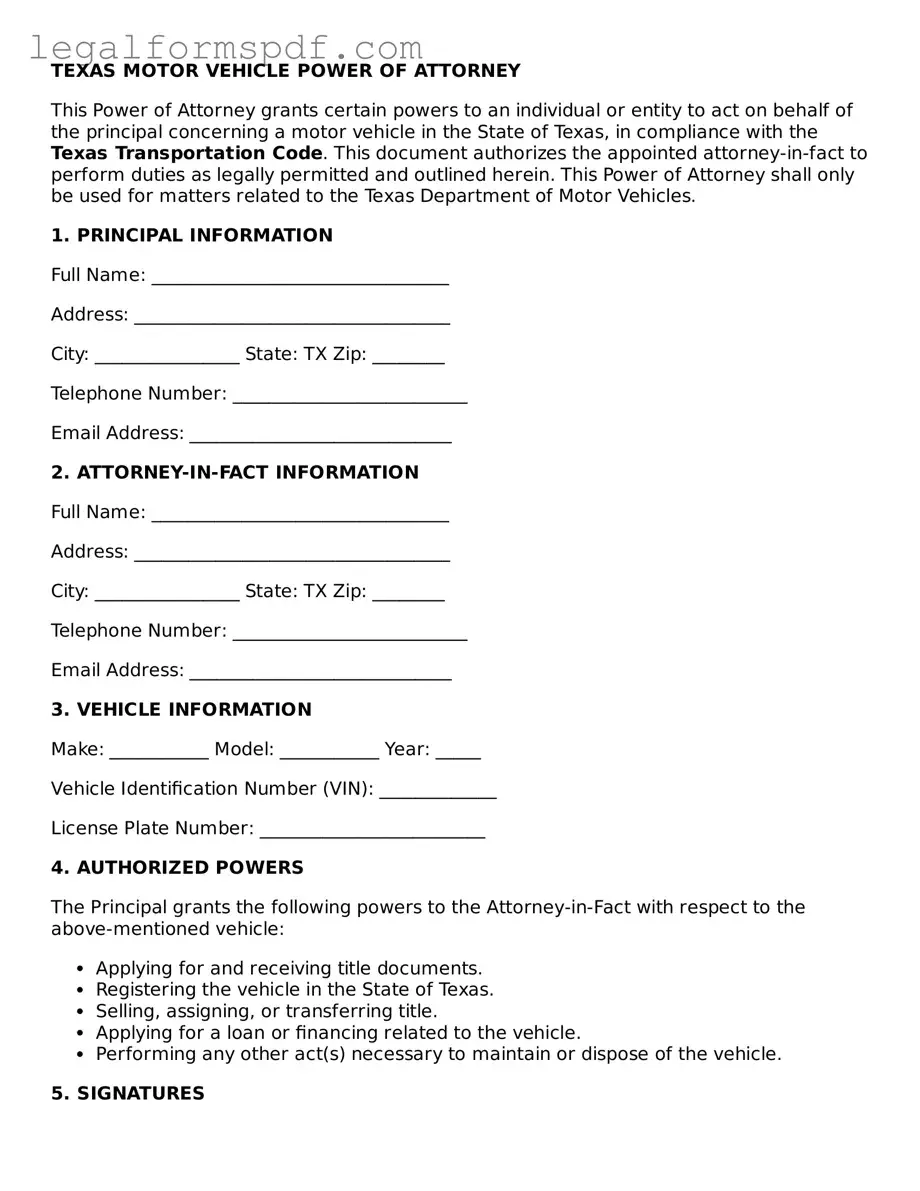TEXAS MOTOR VEHICLE POWER OF ATTORNEY
This Power of Attorney grants certain powers to an individual or entity to act on behalf of the principal concerning a motor vehicle in the State of Texas, in compliance with the Texas Transportation Code. This document authorizes the appointed attorney-in-fact to perform duties as legally permitted and outlined herein. This Power of Attorney shall only be used for matters related to the Texas Department of Motor Vehicles.
1. PRINCIPAL INFORMATION
Full Name: _________________________________
Address: ___________________________________
City: ________________ State: TX Zip: ________
Telephone Number: __________________________
Email Address: _____________________________
2. ATTORNEY-IN-FACT INFORMATION
Full Name: _________________________________
Address: ___________________________________
City: ________________ State: TX Zip: ________
Telephone Number: __________________________
Email Address: _____________________________
3. VEHICLE INFORMATION
Make: ___________ Model: ___________ Year: _____
Vehicle Identification Number (VIN): _____________
License Plate Number: _________________________
4. AUTHORIZED POWERS
The Principal grants the following powers to the Attorney-in-Fact with respect to the above-mentioned vehicle:
- Applying for and receiving title documents.
- Registering the vehicle in the State of Texas.
- Selling, assigning, or transferring title.
- Applying for a loan or financing related to the vehicle.
- Performing any other act(s) necessary to maintain or dispose of the vehicle.
5. SIGNATURES
This Power of Attorney is effective as of ________________ (Date), and will remain in effect until ________________ (Date), unless revoked earlier.
Principal's Signature: ___________________________ Date: _________
Attorney-in-Fact's Signature: ____________________ Date: _________
6. ACKNOWLEDGMENT
This document was notarized by a notary public on the day of ____________, 20__.
Notary Public Signature: ______________________________
Notary Public Name (Printed): _________________________
Commission Expiration Date: ___________________________
IMPORTANT NOTICE: The powers granted by this document are broad and sweeping. They are defined in the Texas Transportation Code. If you have any questions or need further clarification regarding these powers, consult an attorney. This Power of Attorney does not empower the Attorney-in-Fact to perform duties that conflict with the laws of the State of Texas.
